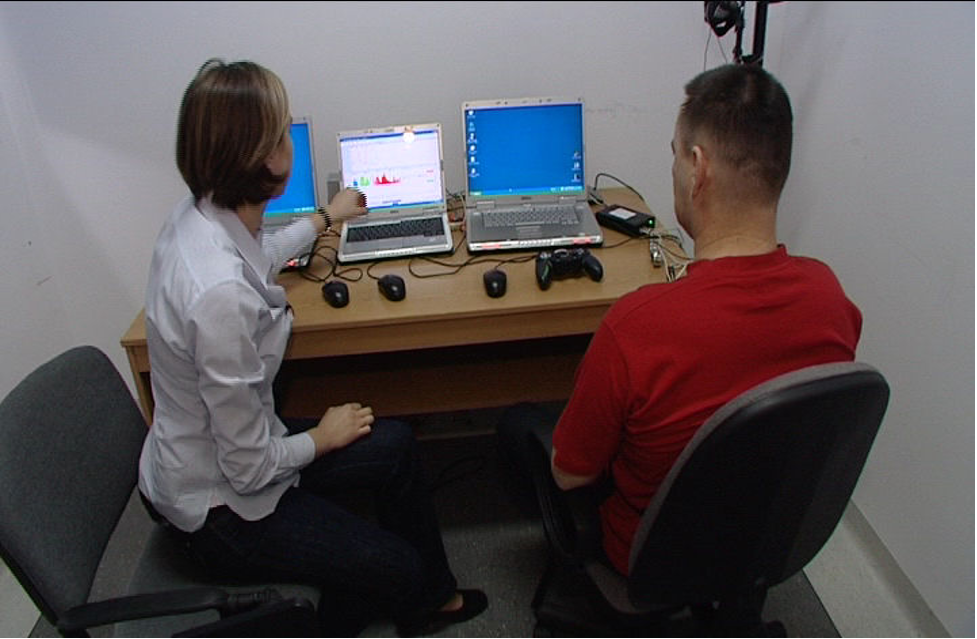It is nearly impossible to get anywhere in California without driving, even in major cities. Stephanie Wall, a 23-year-old resident of Southern California, knows this only too well. Just two days before she was scheduled to begin college in Colorado, Wall was involved in a traffic accident that caused her to stop driving for what she thought would be forever. On a hot summer day, a teenager slammed into Wall’s sport utility vehicle on a freeway in Denver, rolling it over. Wall was rushed to intensive care. As she recovered in the hospital, she thought about her future with driving. “I didn’t want to freak out and get into another accident,” she said.
Two months after her accident, Wall returned home to California to begin the long process of physical therapy. While her body recovered and improved, her fear did not. “I would be in the car with [my] Mom and would get really anxious, sweating, and I would jump,” Wall says. “I would even shut my eyes sometimes when I saw a car coming at me in the same sort of way as [in] the accident.”
After two years of enduring this fear, Wall was referred by her psychologist to Dr. Brenda Wiederhold at the Virtual Reality Medical Center (VRMC) in San Diego, California. At VRMC, Wiederhold uses a combination of cognitive-behavioral therapy and VR-enhanced cognitive-behavioral therapy (VR-CBT) to help patients with specific driving phobias, fear of driving related to panic disorder and agoraphobia, or PTSD due to motor vehicle accidents. Over the last decade, psychologists around the world, including Wiederhold, have been using VR therapy to treat a variety of phobias including fear of heights, public speaking, spiders, flying, medical procedures, and enclosed spaces. However, Wiederhold was one of the first to use VR to treat PTSD due to motor vehicle accidents.
At VRMC, Wall did not enter VR during her first two treatment sessions. Instead, Wiederhold taught her relaxation techniques (e.g. deep breathing, visual physiological feedback, etc.) and cognitive techniques that would help her cope with anxiety when she was confronted with her fear. In subsequent sessions, Wall was placed in the virtual driving environment that included a real automobile seat and seatbelt, steering wheel, gas and brake pedals, and a vibrating platform to simulate movement. The environment allowed Wiederhold to change what Wall was seeing with the press of a key. Situations included varying traffic and weather conditions, a bustling commercial center, a residential area, bridges, mountain roads, and a highway. Over time, Dr. Wiederhold adjusted the scenes, adding speeding cars, pedestrians, rainstorms, and lifelike sounds to make the exposure more realistic.”It was obviously a computerized environment,” said Wall, who now tackles Southern California’s freeways. “But still, it felt real. The drivers would even yell at me, sometimes in Spanish, and one time I started yelling back.” Wall’s final goal was to drive to school 20 miles away, on the freeway.
“When we started getting in traffic on the [virtual] freeway my heart would start racing like I was having a mild anxiety attack,” Wall recalled. “The noises bothered me, too. You could be at a stoplight and they’d have a fender bender next to you and that sound really got to me.”
With VR, “you can have an accident and not get hurt,” Dr. Wiederhold said. “People who are afraid fo the freeway say, ‘Oh my God, this is dangerous.’ I get them to stop the thought and think instead, ‘Yes, I’m sweating, but I’m still in control.'”
After 15 sessions with Wiederhold, Wall is back behind the wheel, for the most part comfortably. “I still use the breathing techniques to this day,” she says. “I find comfort in that. Knowing that I can encounter any situation, anywhere, and I’ll be able to handle it. That makes me a better driver.” Though her original goal was 20 miles on the freeway, Wall now drives 20, 30, or even 40 miles away, allowing her to get to school and physical therapy on her own. She now says that she prefers driving herself. “It has become ‘me’ time,” she says. Walls is still in physical therapy for her injuries from the accident, but she has gone back tot school and recently bought a condo. Her new goal is to drive back to Colorado and finish her trip to Denver. “Someday I’ll accomplish that,” she says, “and it will be with the tools that Dr. Wiederhold taught me.”
Sourced from Dr. Brenda K Wiederhold’s book, Virtual Healing.
For more information on Stephanie’s story, click here.



